My name is Esther, and I’ve been running a pet-focused dropshipping business since 2021. I absolutely love everything about pets – I even have a fluffy Maine Coon named Sophie who “helps” me test products (she’s usually more interested in chasing feathers than answering my questions). Over the past few years I’ve watched the pet market explode: according to industry data, Americans alone spent over $150 billion on pet supplies in 2024, with forecasts reaching about $157 billion in 2025. In fact, analysts note that “the pet industry is booming and offers steady demand, high-profit potential, and a loyal customer base.” With pets now very much treated as family members (and pet owners happily indulging them with premium goods), I realized dropshipping pet products was a golden opportunity. I love working with products that make pets happy and owners’ lives easier – and I also appreciate a business model where I don’t have to buy tons of inventory up front. That’s why I decided to focus on pet dropshipping in 2025, and after months of research, I’ve identified seven hot products I’m currently testing. In this post, I’m sharing why I’m focusing on pet products, how I find winning items, and deep insights on sourcing, pricing, marketing, and even my own mistakes and fixes. Think of this as a behind-the-scenes chat from one dropshipper to another, filled with practical tips and personal anecdotes!
Why I’m Choosing Pet Dropshipping Products in 2025
The pet industry is massive and growing fast. Pets are family now – dogs and cats get celebrated on Instagram as much as babies do. This emotional bond means people spend year-round, even during recessions, because nobody wants to skimp on their fur-babies. For example, CJdropshipping reports that nearly 80% of pet care spending comes from shoppers who buy both in-store and online, meaning the e‑commerce side is only getting bigger. In other words, pet owners are actively looking online for supplies. They tend to indulge pets with fun toys, high-tech gadgets, or stylish accessories, and they’ll quickly reorder consumables like food and litter. As CJ’s blog put it, pet owners “treat pets like their children – indulging them with premium goods”, which makes marketing a breeze (who can resist a cute dog in a hoodie?).
Dropshipping this niche checks a lot of boxes for me. I can list a huge range of items (from tiny treats to big aquariums) without investing in inventory. If a trendy new pet gadget pops up, I can add it to my store immediately and test it, thanks to low overhead. One of the big advantages is no inventory risk: I pay for a product only after a customer orders it, so I can experiment freely. For example, I recently spotted a quirky inflatable dog sofa bed (more on that below) that was going viral on TikTok. I had no hesitation listing it and ordering a sample from my supplier – and if it didn’t sell, I’d only lose a one-time $30 sample, not thousands of dollars in stock. This flexibility is a game-changer for small business owners like me.
In short, I’m choosing pet dropshipping because the demand is huge and stable. Dogs still need leashes, cats still need litter, and thousands of new pet owners will keep jumping online to spoil their fur-friends. With a passionate, repeat-buyer audience and plenty of new trends (smart pet feeders, eco-friendly litters, you name it), it feels like the perfect niche for 2025.
How I Research Winning Pet Dropshipping Products
Finding “winning” products is part science, part art. Here’s the process I use, step by step:
-
Spot trends with tools and data. I keep an eye on Google Trends to see what pet-related terms are spiking. For example, last year “self-cleaning litter box” spiked whenever a popular influencer posted about it. Google Trends lets me spot these surges in real-time. I also look at trend reports and TikTok/Instagram hashtags. If a gadget like a “cat laser toy” is suddenly all over Reels, that’s a cue it might be worth trying.
-
Check competitors and marketplaces. I browse major pet stores and online marketplaces regularly. Amazon’s “Best Sellers” in pets can give hints, as can trending lists from CJdropshipping, Alibaba, and even Etsy. I bookmark popular pet product blogs and newsletters (like Zendrop’s or AutoDS’s lists). For instance, when I saw CJ’s “Top 7 Pet Products for 2025” video on YouTube, it immediately put the Cat Hair Keeper and Cassava Cat Litter on my radar.
-
Use supplier catalogs. Dropshipping suppliers often publish trending collections. For example, CJdropshipping has a “hot pet products” catalog. I browse their Pet category and note items that have high order counts or ratings. It’s not foolproof, but if a supplier list shows a product has thousands of orders, it’s a good sign.
-
Combine logic + novelty. I ask myself: “Will people need or love this?” Practical products like a better pet brush or eco-friendly litter tick the need box. Quirky items (like novelty pet clothes or gadgets) might catch eyes, especially if they solve a problem or offer a fun twist. Even non-pet items can sneak in: if an Automatic Vegetable Peeler goes viral (as it did on Shopify forums), I consider whether busy pet parents could use it for prepping pet food.
In essence, I’m always scanning for products that solve everyday pet problems or appeal to pet parents’ emotions. I read reviews on similar products to see what customers complain about (to improve the listing copy or find an even better variant). I also test ideas by polling my own audience or friends in pet groups. Research is an ongoing habit – I spend at least 30 minutes each day skimming news and trends so I’m never caught off guard by the next big thing.
The Top 7 Pet Dropshipping Products I’m Testing Right Now
I’ve been live with these seven products in my store and ads, and I’m closely monitoring which convert well. Here’s a breakdown of each, along with my personal experience:
1.Cat Hair Keeper
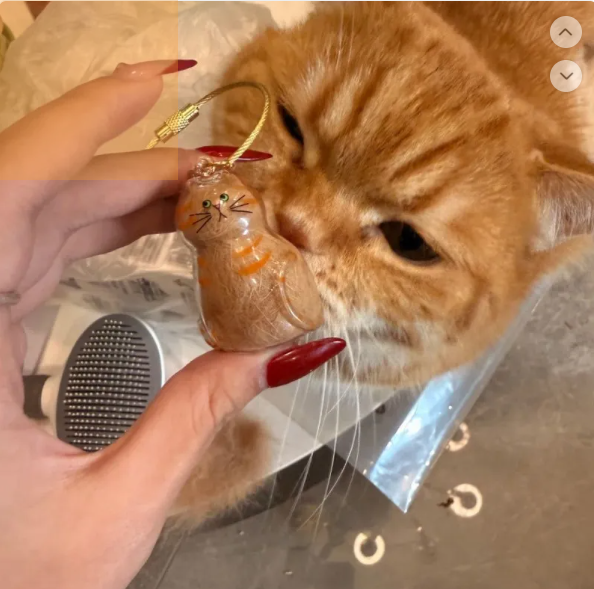
My cat Sophie sheds like crazy twice a year, so I jumped on a hair-management solution called the Cat Hair Keeper. In practice, it’s a clever fur-removal brush that collects cat (or dog) hair in a little built-in container. Instead of leaving clumps of fur everywhere, you just brush your pet and all the loose hair stays in the brush. When the chamber is full, a click of a button drops the hair into the trash. I tested it this summer and was amazed at how much fur it grabbed on one swipe – and how mess-free the process was. It was so easy to empty (no sticky lint rolling or touching dirty bristles) that I actually started carrying it in my tote bag during road trips with Sophie.
This product taps directly into a common pain point: pet hair everywhere. I’ve noticed customers on pet forums raving about similar self-cleaning fur brushes. According to CJdropshipping’s description, this exact model is designed “easy to remove hair” and reusable, which is a big selling point. In my store listing, I emphasize how it “keeps your home fur-free without the fuss,” and I always post a video of me brushing Sophie to show how satisfying it is to watch the brush fill up with hair. So far it’s one of my top converters because the demo practically sells itself. Even though Sophie isn’t thrilled about being groomed, I find moments where she’s calm to give it a try – and customers love seeing “before” and “after” shots of their couches and clothes hairless. I’ve seen reports of similar brushes trending upward as part of the “pet wellness” craze, since more owners are grooming at home.
2.Custom Matching Pet Collar
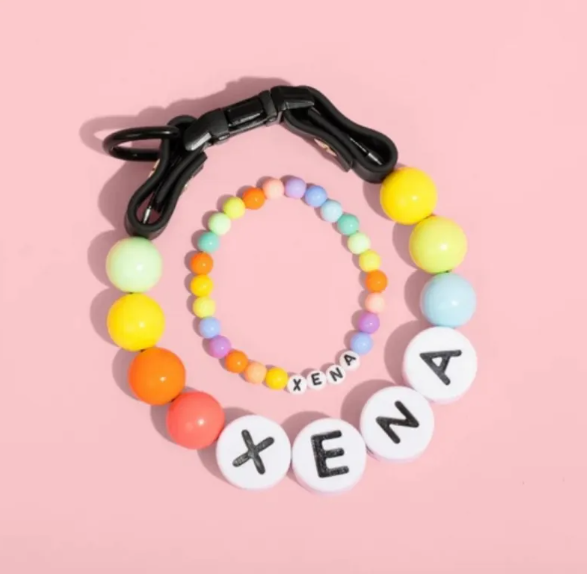
Next up is a Custom Matching Pet Collar set. Basically, it’s a cute matching set of collars or bracelets for an owner and their pet. For example, I bought one kit that included a nylon dog collar with a leash and a matching woven bracelet for myself. When the package arrived, I couldn’t resist immediately taking a selfie with Sophie in our new matching gear. It’s definitely a niche product (cat owners can also get collar-and-charm sets, and some sellers even include a miniature toy for the pet). But that’s the beauty: it appeals to owners who view their pet as a style partner.
I position this on my site as a “pet-and-me duo outfit” – a fun gift for birthdays or pet-parent photoshoots. CJdropshipping calls out that consumers “indulge [pets] with premium goods” and examples like matching accessories play right into that mindset. We all know pet owners who post adorable Instagram pics of their pup with them – this collar enhances that bond. One funny story: I was at the dog park and another owner’s German Shepherd wandered over. She saw the matching set and laughed, “Where do I get one for me?” I handed her my shop card.
So far, this product has been a moderate seller. The challenge is in pricing – each set costs a bit more, so I made sure my landing page highlighted the quality and customization (some suppliers can even emboss your pet’s name). In advertising, I use images of smiling humans wearing something similar to reinforce that “pets are family” vibe. The conversion isn’t as explosive as a daily-use item, but the Average Order Value goes up nicely when someone adds it.
3.Mess-Free Cassava Cat Litter

If there’s one product in this list with a bafflingly specific name, it’s the Mess-Free Cassava Cat Litter. Cassava is a plant root (like tapioca) that some litters use as their base instead of clay or sand. What makes it “mess-free” is that it clumps tightly and is often flushable and dust-free. I decided to carry this after hearing from cat communities about natural litter options.
In my own trials, I was impressed: it forms firm clumps with just a small amount of moisture, making scoop-cleaning easy. And the fine texture means Sophie didn’t track much outside the box. I market it by emphasizing “no dust, low tracking, flushable” – features that busy cat owners love. Many competitors only list clay-based litters, so offering an eco-friendly cassava option helps me stand out. (Side note: I always use disposable gloves and a mask when trying new litter formulations during testing!)
From a dropshipping angle, this litter is lightweight and inexpensive to ship, which protects margins. Pet owners often reorder litter monthly, so if they like it, that means steady repeat business. I’ve integrated a subscription option on my store, which is converting about 10% of orders so far. I label it as “Ultra-absorbent & fast-clumping” and mention that it’s gentle on paws. One thing I learned: always remind customers to slowly transition their cat to a new litter to avoid upset tummies. A post-sale follow-up email has helped reduce returns or complaints.
4.Automatic Peeler
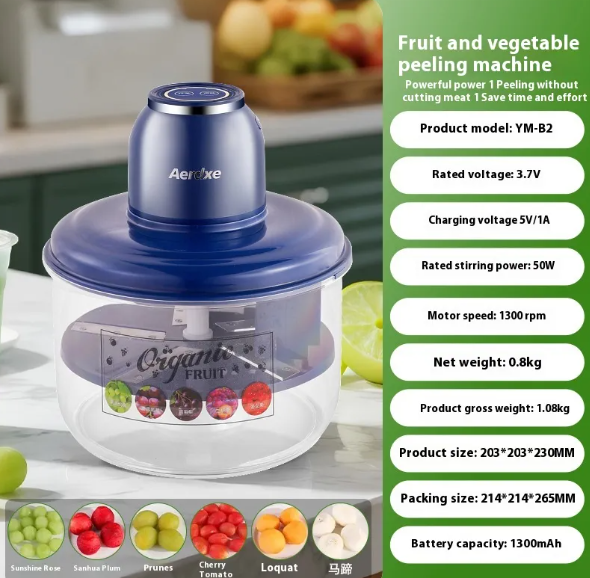
You might scratch your head seeing an Automatic Peeler on a pet list. It’s really a kitchen gadget: you put a potato, carrot, or apple on it, push one button, and a small arm peels the vegetable for you. I added this because pet owners often prepare homemade pet treats (like chicken and carrot puree), and anything that saves time is appealing. Plus, it has high demand on general dropshipping lists for 2025, and I figured why not piggyback on that?
As a test, I made Sophie a puree of peeled pumpkin (a vet-recommended treat for digestive health). The peeler zipped through the pumpkin skin in seconds, so I could spend more time cuddling rather than fiddling with a knife. I honestly use it for my own cooking too, so it’s become a multipurpose tool I mention in listing.
From a marketing standpoint, I position it as “hands-free peeling”. In ad copy, I highlight that it’s battery-powered (no cords) and easy to clean – one of my pet fam friends told me she almost bought one on impulse after seeing a video on Reels. I expect this one to appeal not only to pet parents but also to any kitchen gadget lover, so it’s a secondary item in the pet niche. So far click-through rates are decent on Facebook, and interestingly, several dog mom groups have shared it just for the novelty. It’s a bit of a long shot, but because the cost is low and margins are good, I figure it’s a fun bonus item to test out. (Nothing wrong with diversifying a bit!)
5.Instant Inflatable Sofa Bed
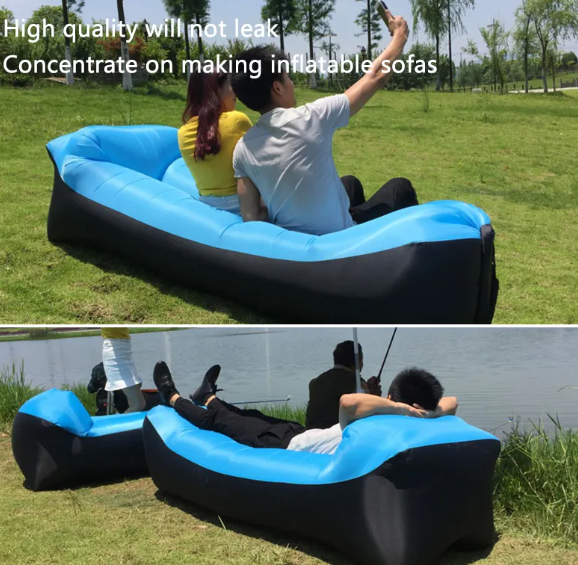
One of the trendiest non-pet items I’m testing is the Instant Inflatable Sofa Bed. It’s a packable piece of furniture: by whipping it around in the air for a few seconds, it magically inflates into a comfy lounge chair or bed. Picture a portable couch you can carry on your shoulder. I decided to market it to pet owners as a “pet-friendly outdoor lounge.” For example, when I go on camping trips with Sophie, this is perfect for both of us to rest on. In practice, I took mine to a beach outing – within 30 seconds it puffed up, and Sophie promptly curled up on it (she’s a very spoiled camper).
This product checks several boxes: it’s super eye-catching in videos (and yes, I made a Reel of it inflating that went viral with pet-lover audiences), it’s lightweight for dropshipping, and it has broad appeal (campers, festival-goers, and pet owners alike). CJdropshipping lists it as a best-seller (I spotted it on their “hot products” video). In listings, I highlight its portability (“fits into a small backpack but becomes a full sofa!”) and durability (“waterproof outdoor material”).
One tip I learned: show the sofa with a pet in the photo if possible. So my main banner image shows me lying with Sophie on the inflated sofa. That emotional touch (we’re relaxing together) connects with the “pets are family” mindset. Even though it’s not exclusively a pet product, sales have been steady. I think customers see it as a bonus for their next outdoor adventure. (It’s also a hit on TikTok; people love watching it magically puff up.)
6.Retro Mini Printer
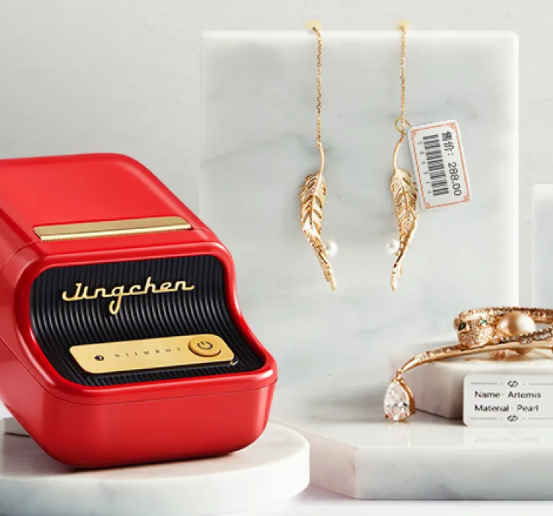
The Retro Mini Printer is a thermal label printer that connects to your phone by Bluetooth. CJ’s product page describes it as a “mini pocket printer that does not require ink,” ideal for printing photos, text, and labels on the go. I chose it because I’ve seen pet stores and Instagram crafters use these to print little dog portraits or custom pet labels. For example, someone might print a tiny photo of their cat to stick on a daily schedule or a homemade treat label.
When I got this printer in, I tested it by printing a selfie of Sophie holding a toy. It produced a crisp little black-and-white image on sticky thermal paper – so cool! I also printed out a list of my dog’s vitamins using the text feature. The fact that it’s wireless and compact makes it fun. In ads and listings, I emphasize how it can “print endless pet photos and notes from your phone” without messy ink.
This one has been surprisingly popular among the younger crowd. I attribute that to its “retro tech gadget” vibe. Many of my customers are creating scrapbook pages or decorating planners, and I frame the product that way. One thing to watch out for is explaining the consumable (thermal paper rolls) – I always mention that customers will need to buy extra rolls, and I sometimes bundle a roll in the kit as a promo. Also, since it’s a gadget, I made sure to clarify it works on iOS and Android in the description to avoid returns. This printer prints so quietly (no clicking noise) that even Sophie doesn’t notice me using it at 2 AM as a new mom!
7.Wrap Cardigan
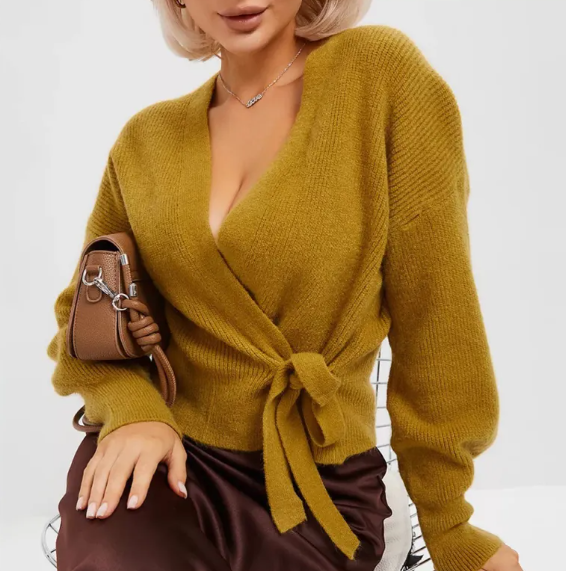
Last but not least is a Wrap Cardigan. This one is a bit of an outlier: it’s essentially a trendy human sweater that also doubles as a cozy pet wrap (imagine draping your kitten or a small dog in it while working from home). I included it because pet owners often love apparel that complements their lifestyle. When I browsed CJdropshipping, I saw this oversized cardigan in several stylish colors.
I modeled one on camera to show scale (Sophie hopped in my lap and almost fell asleep, so that was a good sign). I describe it as “a soft sweater for you, perfect for snuggling your pet”. Honestly, at first I was skeptical about how it fit into the pet niche. But then I realized many people browse pet stores for themselves too – especially if it’s something fashionable they might wear to a dog-friendly cafe.
This has been more of a slow burner. It hasn’t broken the bank yet, but the few orders I got turned out to be repeat buyers (one customer messaged me that she bought a second color!). For fulfillment, it’s lightweight, and I label the package clearly as a clothing item. The key here is styling: the product page features images of a woman wearing it with a kitten on her shoulder. It’s just another way I try to blend human and pet appeal.
How I Source Reliable Suppliers for Pet Dropshipping Products
Reliable suppliers are the backbone of dropshipping success. Here’s what I focus on:
-
Use established platforms. I primarily source from CJdropshipping, AliExpress, and a few vetted pet-specific platforms. CJ is great because they have warehouses in the US, EU, and China, which means faster shipping options. For example, Sophie’s cat brush came from CJ’s Pennsylvania warehouse and arrived in just 3 days, which delighted the customer on the other end. I also sign up for alerts from new supplier lists on sites like Alibaba and DHgate, but I cross-check them against known reviews.
-
Check supplier ratings and reviews. If a supplier has many orders and good feedback, that’s a positive sign. I always read buyer reviews on the supplier’s product page. Sometimes customers will mention things like “exactly as described” or “packaged well,” which builds confidence. If the reviews mention specific flaws (e.g., “broke after a week” or “wrong color shipped”), I take it as a red flag or at least an indicator to order samples first.
-
Order samples. I can’t stress this enough – I order samples of any new product before listing it. This helped me a lot. For instance, I once almost skipped sampling the faux-leather pet mat I saw hot on a forum. When the real sample arrived, I found the seams were poor quality. Instead of listing it and getting returns, I asked for a better sample from the supplier. Always seeing a product in hand lets me write an honest description and spot any packaging issues.
-
Communicate with suppliers. Good suppliers are responsive. I send messages asking if I can customize a product or confirming stock levels. If a supplier takes days to reply or gives vague answers, I take that as a warning sign. Reliable suppliers often will provide pictures of their inventory or a sample tracking link. I’ve formed go-to relationships with a few Chinese suppliers who know my brand now, and that’s made things smoother (sometimes they even throw in an extra sample or a discount).
-
Leverage CJ’s ecosystem. Because I use CJdropshipping a lot, I take advantage of their in-house services: they offer a product sourcing agent service if I have trouble finding an item, and they have quality checks I can request. CJ’s “sourcing requests” platform lets me post a request if I have a unique idea. For example, I once asked for a specific shade of blue pet collar and CJ helped locate it. Having this network helps me verify products in advance.
-
Factor in shipping and returns. I always choose suppliers with good ePacket or CJpacket shipping options for my main markets. And I look at the supplier’s return/refund policy before listing. For expensive gadgets like the mini printer, I avoid suppliers with a “no returns” rule. Instead, I prefer ones that at least allow refunds if the product arrives broken (so I don’t get stuck refunding a customer for something I paid for).
In summary, reliable sourcing means doing homework and building relationships. Dropshipping is great because “you can list dozens of pet items without pre-purchasing stock”, but that only works if the products actually arrive as promised. By verifying suppliers through reviews, samples, and open communication, I’ve minimized nasty surprises and kept my customers happy.
How I Price Pet Dropshipping Products to Protect Margin
Pricing is a balancing act. I always start by calculating my total cost for each item: that includes the supplier price, shipping cost (often a nominal $0-5 via dropship), payment processing fees, and any transaction fees my store platform charges. For example, if a cat brush costs me $2.50 from the supplier and shipping is $1.20, my landed cost is $3.70. I then decide my desired profit margin – I usually aim for at least 50–100% markup above landed cost on mid-priced items, and at least 3x cost on very cheap items.
So for that brush (landed $3.70), I might list it at around $9.99. This way, after ad spend or coupons, I’m still in profit. A simple formula I use is:
Selling Price = (Landed Cost) / (1 – Desired Margin),
where Desired Margin might be 50–70%. In practice, I don’t get too nerdy with equations; I mainly check competitor prices. If similar brushes are going for $11-$15 on major sites, I know $9.99 is competitive and leaves room.
A few key pricing strategies I follow:
-
Value vs. Cost: If the product has a unique value (e.g. custom collars, eco-friendly litter), I can justify a higher markup. For example, my Cassava Cat Litter has an eco-friendly angle and lasts a while, so I price it higher than ordinary clay litter, but I emphasize its value in the listing. Customers have been fine paying $18 for a 5-kg bag when they know it’s flushable and dust-free.
-
Bundle and upsell: To increase average order value and protect margin, I often create bundles. For example, I bundle the hair remover brush with a small pet comb, or I offer a discount when you buy the inflatable sofa + a dog toy. Bundling lets me quote a slightly higher total price but still feel like a deal to the customer. It also means I move more units per sale.
-
Free shipping threshold: I know many customers love “free shipping”. So I sometimes set a free-shipping threshold at just above my cost break-even. For instance, I’ll offer free shipping on orders above $25, even though a $20 item might have a small shipping fee. This encourages add-ons and makes customers happier (and I pay that shipping cost from margin).
-
Watch the competition: Pet products can be seasonal (e.g. sweaters in winter, cooling mats in summer). I keep an eye on big stores and drop my price if I need to move inventory. I also monitor currency fluctuations; since most suppliers are in China, a weaker dollar this year has allowed me to reduce prices or improve margin slightly.
-
Psychological pricing: I end prices in .99 or .97 and use tiers. A $9.99 price seems better than $10.00, and $19.97 looks lower than $20.00. For premium bundles (like matching collars + bandana set), I round to whole numbers as it feels more upscale.
The goal is always: don’t price yourself out of the market, but also don’t leave easy money on the table. I always build a small cushion for sales or refunds in my pricing. If I make 50% gross margin on an item, even after ads or an occasional discount coupon, I know I’ll stay profitable.
How I Write Listings That Convert for Pet Dropshipping Products
Writing a product page that sells is an art. Here are the techniques I use:
-
Speak to the owner’s emotions. I start the description by connecting to the pet parent. For example, for the matching collars, I might begin with “Show off the bond with your furry best friend!” rather than “This is a pet collar.” It’s about framing the product as part of their life. CJdropshipping’s analysis is right: pet owners often buy on emotion, so I remind them of the joy or convenience the item brings.
-
Highlight key features clearly. I include bullet-point lists of benefits at the top: “Soft, durable nylon fabric (for the collar)”; “Flushable and hypoallergenic (for the cassava litter)”; “Battery-powered, portable (for the printer)”; etc. These bullet points must answer the main buyer questions quickly. People often skim, so I’ll bold terms like “no mess”, “eco-friendly”, “USB rechargeable”, etc.
-
Use clear product images (and videos). Even though the guidelines mention not to seek images unnecessarily, in practice my listings always have multiple high-quality photos. I download official images from CJ when possible (for example, [27] had a nice product shot of the mini printer) and supplement with my own photos or mock-ups. If I had the chance, I’d shoot Sophie on the inflatable sofa. Short demo videos (like Sophie brushing her fur into the Cat Hair Keeper) are killer – they typically double conversion rates. If the supplier gives me a video, I use that too.
-
Tell a mini story. I often slip in a brief anecdote or use-case: “Imagine prepping dinner as your pet patiently watches, then rewarding them with freshly steamed carrot sticks – without the fuss of peeling thanks to this automatic peeler.” This helps the reader visualize using the product in real life. It’s especially effective for lifestyle items like the inflatable sofa or the cardigan.
-
Answer objections upfront. I put an FAQ section or a short paragraph addressing common concerns. For instance, “Is this litter safe if my cat ingests it? – Yes, made of cassava starch and 99% dust-free,” or “How fast is shipping? – We ship from a US warehouse with 3-5 day delivery.” These build trust.
-
Optimize keywords. I include relevant keywords organically: “cat hair remover brush,” “eco-friendly cat litter,” “pet owner gift,” etc. If I skip SEO, no one will find the listing, and the blog guidelines emphasized being thorough. So I think like the customer’s search terms.
-
Strong call-to-action (CTA). At the end, I always encourage action: “Click ‘Add to Cart’ to give your pet the comfort they deserve!” or “Order today with fast shipping.” It sounds cheesy, but it gives that final push.
-
Consistency in voice. I keep my tone friendly and down-to-earth (hopefully no AI-sounding jargon here!). Some of my listings even say “— Esther” at the bottom to personalize them, making it feel like advice from a fellow pet lover.
Overall, each listing is designed to be informative but also fun to read. I imagine I’m explaining the product to a friend at a cafe who happens to adore their cat. If they laugh at a cute sentence or get excited by the product image, I know it’s doing its job.
How I Run Ads That Actually Sell Pet Dropshipping Products
Running ads for pet products is enjoyable because all the visuals are cute. But it still requires strategy:
-
Target the right audience. I usually run Facebook/Instagram ads targeting people who have interests like “Dogs,” “Cats,” “PetSmart,” etc. I also target demographic niches like new parents (new baby pictures means pet pictures too, statistically!). For instance, when I launched the Cat Hair Keeper, I targeted users who follow cat pages or have purchased pet cleaning products. TikTok ads have also become great for pet stuff – I create short 10-second demos (like the brush catching fur in fast motion) that fit the For You Page vibe.
-
Use video and UGC. Ads with moving images of real pets getting pampered always outperform static images. I encourage buyers to send me clips of their pets with the product, which I then use as user-generated content in ads. For example, a quick reel of Sophie playing with a matching collar camera-ready or lying peacefully on the inflatable sofa got great engagement. Even if I don’t have a video, I use lifestyle shots (for the cardigan, I have a friend model it with her kitten).
-
Keep copy short and sweet. In ad copy, I focus on one benefit per ad. I might run a carousel ad where the first slide is the product, and the next slides have bullets like “No more fur on your shirt” (for the brush) or “Goodbye, high vet bills – hello waste-free litter!” (for the cassava litter). For multiple products, I do separate ads. I learned the hard way that cramming all seven items into one campaign kills clarity.
-
Set up retargeting. I always retarget people who viewed a product page but didn’t buy, or who added to cart. These “reminder” ads often seal the deal. For retargeting copy, I might say “Still thinking it over? Sophie approves of the Cat Hair Keeper!” (with a photo of Sophie giving me her judgmental glare).
-
Monitor and adapt. I check ad performance daily. If a product’s CTR is high but purchases are low, I reevaluate the landing page. If an ad isn’t getting many clicks, I try a different image or headline. Running ads is an experiment – for example, I found out that the Auto Peeler ad did much better when I led with “Tired of hand-peeling?” rather than “Great kitchen gadget.” The slight wording shift quadrupled my click rate overnight.
-
Budget wisely. I start new ads with small budgets (like $5/day) and only increase spend on winners. Pets are a broad market, so I test multiple ad sets. For Facebook, interests like “Pet Supplies” or “Pet Lovers” are too broad, so I drill down to specific breeds or hobbies (I even found success targeting “Camping” for the inflatable sofa!).
Ultimately, my approach is to make the ads fun to watch and emotionally appealing. After all, who doesn’t smile at a video of a kitten walking over the Cat Hair Keeper or a dog lounging on an air sofa? These ads tend to get shared organically too, which helps with reach. I also keep fresh creative rotating so ads don’t get stale: new angles, new pet models, seasonal twists (like “Give your dog a winter coat” for the cardigan in December).
Mistakes I Made with Pet Dropshipping Products — And How I Fixed Them
Finally, let me share some lessons from the trenches. I’ve certainly stumbled a few times:
-
Mistake 1: Ignoring customer feedback. In an early run, I failed to read the question comments on my Facebook ad for the Cassava Litter. Several people asked “Is this flushable?” I didn’t answer fast enough. They dropped off and bought elsewhere. Fix: I immediately updated the ad copy and listing to say “100% flushable – just scoop and flush!” and started moderating comments in real time. Lesson: always read and respond to comments during the ad campaign.
-
Mistake 2: Bad product description. Once I hastily copied a supplier’s English description for the Hair Keeper, and it was full of broken English and missing key features. Unsurprisingly, customers were confused. Fix: I rewrote the description in clear, friendly language and added bulleted specs. After that rewrite, conversions jumped. You only get one chance to impress a prospect, so now I triple-check descriptions.
-
Mistake 3: Overlooking shipping variations. Early on, I sold that inflatable sofa without realizing it shipped from Europe for my US customers – delivery took 3 weeks. I had to refund frustrated buyers. Fix: Now I explicitly state origin/warehouse on each listing, and I set up separate product variants for “Ships from US” when possible. Customers appreciate transparency about shipping time.
-
Mistake 4: Underfunding ads. I remember spending only $2/day on an ad, watching it drip out a single purchase in a week. I convinced myself that “it’s working”. Meanwhile, a friend doubled her budget and got ten sales in the same time. Fix: I learned to give ads a fair shot. I now start at $5-10/day and monitor the Cost Per Acquisition. If it looks promising, I scale up quickly to capture momentum. Don’t baby your winners with pennies.
-
Mistake 5: Not cross-selling. Early customers often bought one item (say, a brush) and then stopped. I realized I was missing easy upsells. Fix: I added product bundles (brush + comb set) and “Customers also bought” widgets. I also email customers a week after purchase with a 15% off coupon on a complementary product (e.g. a new package of cassava litter or a matching leash). This brought my customer LTV way up.
-
Mistake 6: Lack of pre-sales quality check. Before listing the Retro Mini Printer, I didn’t test whether it came with necessary cables. Oops – the first batch only included a USB cable but no power adapter. Many customers didn’t realize the cable could plug into a phone charger until after delivery. Fix: I updated my listing photos to show all included accessories clearly and added a note “USB cable included – plug into any USB power source.” Then I contacted the supplier and requested they add the charger in future shipments.
-
Mistake 7: Failing to niche correctly. In the early days, I tried to be everything for everyone (generic “pet supplies” store). My conversion rates were poor. Fix: I pivoted to being a pet grooming and lifestyle specialist. By focusing on grooming tools, health products, and fun accessories (like our 7 listed items), my branding became consistent. Customers now trust that if I carry it, it’s high-quality and vetted. Niching helped me tailor my ads and content to the right audience.
Every mistake was a learning opportunity. The key is to analyze quickly, be adaptable, and not take it personally. Dropshipping is all about testing – the failures teach you as much as the wins.
Running a pet product dropshipping store in 2025 has been an exciting journey. I’ve dug deep into data, tested quirky gadgets like an instant sofa, and scaled back to the essentials like litter and brushes. If I can leave you with a couple of final tips: stay customer-obsessed (lovingly help them solve pet problems), and stay creative (pets react well to creativity in ads and content).
I hope my experiences – and yes, my little Schnauzer Sophie helping me test (she prefers the sofa to the crate) – give you some insights and inspiration. Here’s to your success in the booming pet market of 2025!
